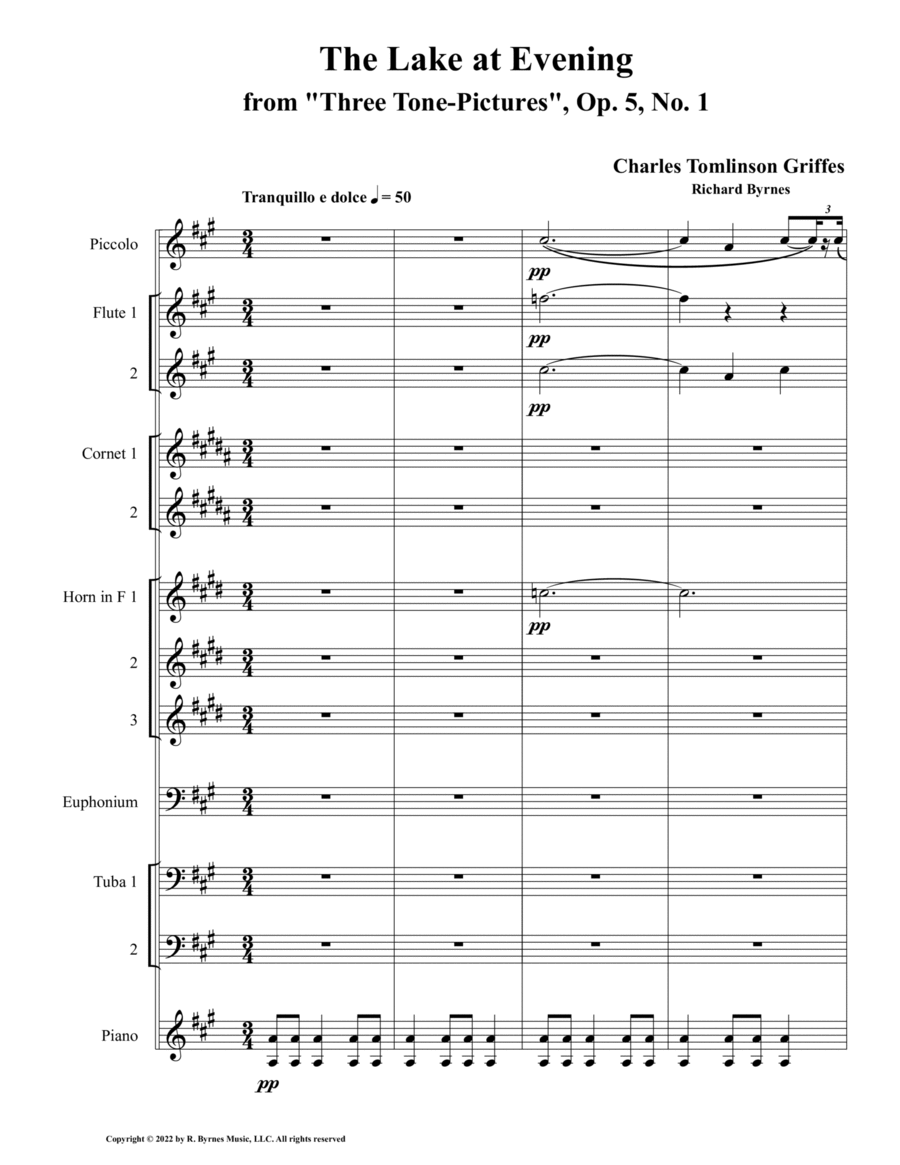Cornet,Euphonium,Flute,Horn,Piccolo,Tuba - Digital Download SKU: A0.830853 Composed by Charles Tomlinson Griffes. Arranged by Richard Byrnes. 20th Century. 33 pages. Richard Byrnes #6859767. Published by Richard Byrnes (A0.830853). Charles Griffes (1884-1920) was an American composer, considered to be an American impressionist. He primarily wrote for piano, although he created chamber works and orchestral music as well.  This is the first movement of a set of pieces entitled Three Tone Pictures, Op. 5.  Imagine sitting near the shore near the still water as the sun slowly sets. This is an arrangement for Piccolo, 2 Flutes, 2 Cornets, 3 Horns, Euphonium, 2 Tubas, & Piano.  In addition to works by Griffes, we offer works by J.S. Bach, Brahms, Debussy, Dvorák, Fauré, Glazounov, Glinka, Gottschalk, Granados, Lotti, Mendelssohn, Mozart, Ravel, Richard Strauss, Turina, & Vierne.
